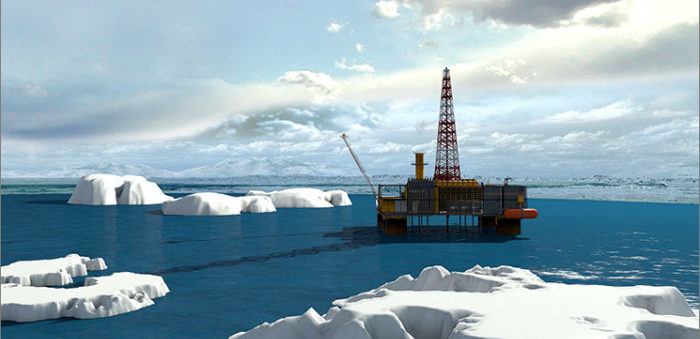Norway’s Petroleum Safety Authority has given the Norwegian oil firm DEA Norge (DEA) consent for exploration drilling in block 7321/4 in the Barents Sea. The consent covers drilling of exploration well 7321/4-1 in production licence 721 in the Barents Sea.
The location is 120 kilometres northeast of the Johan Castberg field, 93 kilometres southeast of Bjørnøya and 309 kilometres from the Norwegian mainland (Ingøya in Finnmark). The geographical coordinates of the drilling site will be:
73° 44′ 07.76″ N
21° 08′ 21.94″ E
Water depth at the site is 497 metres. Drilling is planned to begin in late August 2018 for an estimated 32 days.
Well 7321/4-1 is to be drilled by the Island Innovator mobile drilling facility. This is a Global Maritime GM4000 type semi-submersible drilling facility, and was a newbuild from the COSCO shipyard in China in 2012. It is owned by Island Drilling Company, operated by Odfjell Drilling, is Norwegian-flagged and classified by DNV GL. Island Innovator was issued with an Acknowledgement of Compliance (AoC) by the PSA in August 2013.
Earlier in July, PSA Norway granted oil major Equinor consent for exploration drilling in block 7132/2, in production licence 857 in the eastern Barents Sea, as well as 7220/5-3 in production licence 532 in the Barents Sea.
Well 7132/2-1 is to be drilled by the West Hercules mobile drilling facility. This is a semi-submersible drilling facility of the GVA 7500 type, operated by North Atlantic Drilling. West Hercules was issued with an Acknowledgement of Compliance (AoC) by the PSA in December 2012.
Well 7132/2-1 is to be drilled by the West Hercules mobile drilling facility. This is a semi-submersible drilling facility of the GVA 7500 type, operated by North Atlantic Drilling. West Hercules was issued with an Acknowledgement of Compliance (AoC) by the PSA in December 2012.
Arctic drilling is a controversial issue across oil and gas industry and environmental groups worldwide. According to Greenpeace, the Barents Sea differs from other areas on the Norwegian shelf and in the North Sea, where most of the current oil drilling is taking place. This part of the ocean has very little infrastructure, while “darkness during the winter months as well as icing, frozen equipment, and possibilities for drifting ice, increase the safety and environmental risks.”
Last year, the Norwegian government, for the first time in 20 years, opened up a vast new, pristine area in the Barents Sea for oil exploration. A total of 13 oil companies were granted 10 licenses.
































































